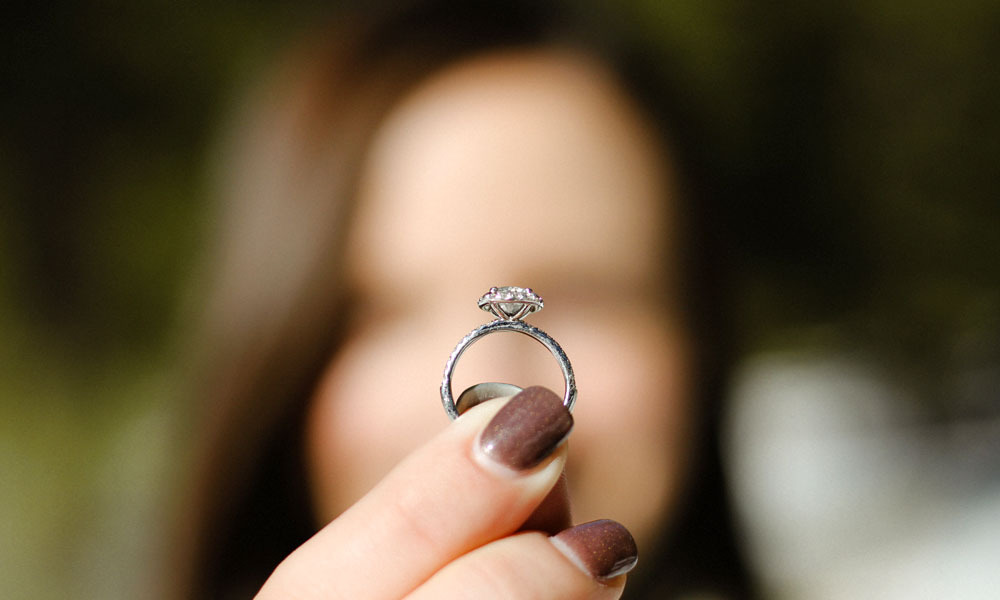When it comes to engagement rings, the tradition of choosing a diamond has long been synonymous with eternal love and commitment. However, in recent years, there has been a significant shift towards embracing alternative gemstones or even forgoing stones altogether. This trend marks a departure from the conventional norms of engagement ring selection, offering couples a chance to express their individuality and values in new and meaningful ways.
The allure of alternative gemstones lies in their unique colors and properties that can often surpass the brilliance of diamonds. Gemstones like sapphires, rubies, and emeralds have become popular choices due to their vibrant hues and durability, making them suitable for everyday wear. Each gemstone carries its own symbolism, allowing couples to choose colors that resonate with their personalities or hold special meaning in their relationship. For instance, sapphires symbolize loyalty and wisdom, while emeralds are associated with hope and renewal, adding layers of significance to the ring beyond its aesthetic appeal.
Beyond colored gemstones, another emerging trend is opting for minimalist designs that eschew traditional stones altogether. These modern interpretations focus on sleek bands crafted from precious metals like platinum or gold, emphasizing simplicity and elegance. The absence of a central stone shifts the focus to the craftsmanship and design details of the ring itself, offering a contemporary aesthetic that appeals to those with understated tastes.
The decision to choose an alternative gemstone or a stoneless engagement ring often reflects broader societal shifts towards sustainability and ethical sourcing. Diamonds, once considered a girl’s best friend, have faced scrutiny due to concerns over mining practices and labor conditions. In response, eco-conscious couples are turning to ethically sourced gemstones or lab-grown diamonds that minimize environmental impact and uphold fair labor practices. This ethical consideration aligns with a growing desire among consumers to make socially responsible choices, even when selecting something as sentimental as an engagement ring.
Moreover, the financial aspect cannot be overlooked. Diamonds have traditionally been associated with high price tags, influenced by market forces and perceived rarity. In contrast, alternative gemstones offer a more affordable option without compromising on beauty or symbolism. This accessibility allows couples to allocate their resources towards other meaningful investments, such as experiences or future plans together, rather than solely on the ring itself.
As societal norms evolve, so too do our expressions of love and commitment. The shift towards alternative gemstones or minimalist designs signifies a departure from traditional expectations, empowering couples to redefine what an engagement ring symbolizes in their relationship. Whether it’s a striking sapphire, a minimalist band, or even no stone at all, the choice ultimately reflects a couple’s shared values, aesthetics, and personal journey together.
In conclusion, the era of “one size fits all” for engagement rings is giving way to a more diverse and personalized approach. The trend towards alternative gemstones or no stone at all not only offers aesthetic variety but also aligns with contemporary values of sustainability, ethics, and individuality. By embracing these alternatives, couples are creating meaningful symbols of their love that resonate with who they are and what they stand for, beyond the allure of a traditional diamond. As the engagement ring landscape continues to evolve, one thing remains certain: the beauty of love shines brightest when it’s celebrated in ways that are as unique and special as the individuals it binds together.


 Why You Should Join a Minecraft Towny Server Today
Why You Should Join a Minecraft Towny Server Today  The Science Supporting Natural Wellness from Green Kratom
The Science Supporting Natural Wellness from Green Kratom  Myths About CBD That Need to Be Debunked
Myths About CBD That Need to Be Debunked  How to protect yourself when using a deep web search engine?
How to protect yourself when using a deep web search engine?  Are CBD Gummies for Anxiety a Miracle Cure?
Are CBD Gummies for Anxiety a Miracle Cure?  Liquid Vaults: Ether.fi unlocks automated DeFi earnings
Liquid Vaults: Ether.fi unlocks automated DeFi earnings  How to share legal advice securely using self-destructing notes?
How to share legal advice securely using self-destructing notes?  Maximize your wins: Top Strategies for Football Betting in Online Casinos
Maximize your wins: Top Strategies for Football Betting in Online Casinos  Five Businesses You Could Start Today for Additional Income
Five Businesses You Could Start Today for Additional Income 